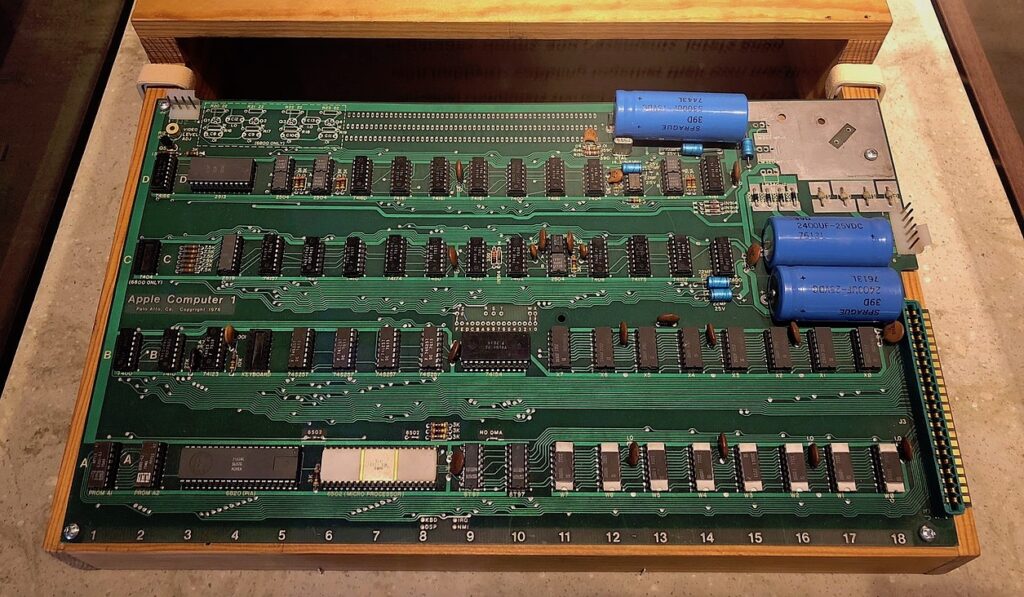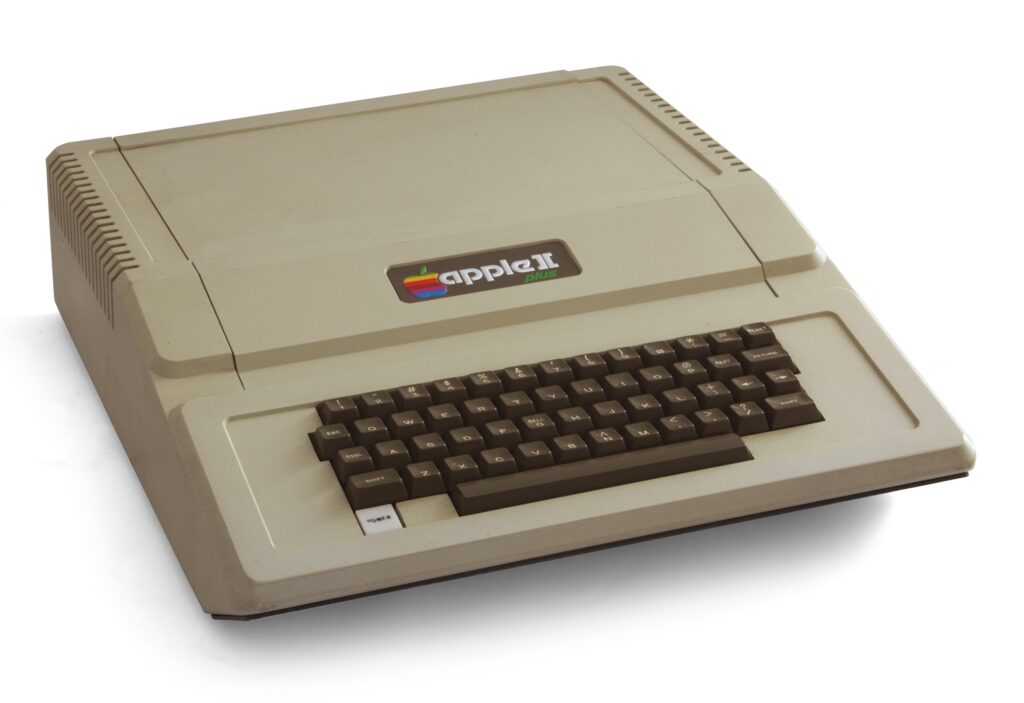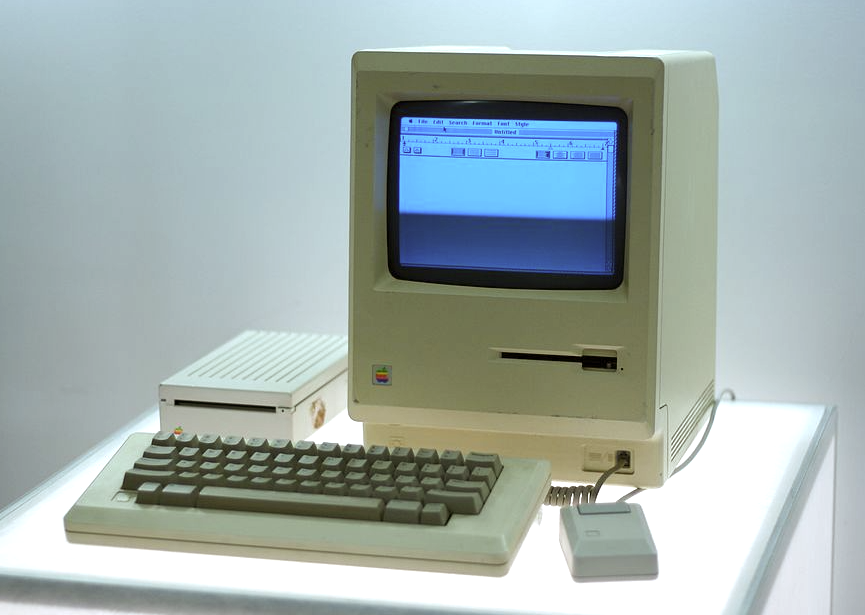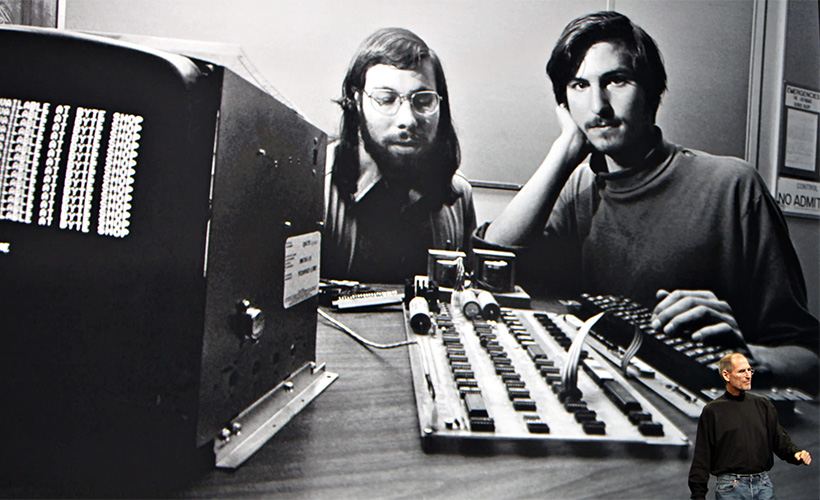Choose by Serial Number
- 1971
- Bill Fernandez, a mutual friend and fellow Homestead High School alumnus, introduces 16-year-old Steve Jobs to 21-year-old Steve Wozniak. They quickly become friends, sharing their interest in electronics.
- Steve Jobs and Steve Wozniak begin attending meetings of the Homebrew Computer Club together. This hobbyist group is very influential in the early development of the personal computing phenomenon.
- Steve Wozniak creates his first computer, the Cream Soda Computer. His efforts are encouraged by Steve Jobs.
- Steve Jobs begins attending Reed College in Portland, Oregon but drops out after six months. He continues attending classes that interest him, such as calligraphy, and later said that this early exposure to font design would be significant in the development of the distinctive typography in Apple’s first Macintosh computers.
- 1972
- Steve Jobs returns to California and begins attending meetings of the Homebrew Computer Club with Steve Wozniak. He takes a job as a technician at Atari, a manufacturer of popular video games.
- Steve Wozniak designs the video game Pong and Steve Jobs is employed to build it. They manage to reduce the number of chips required, demonstrating their ability to “think different” and find elegant solutions to complex problems.

- 1973
- Steve Jobs travels to India with a Reed College friend (and, later, the first Apple employee), Daniel Kottke, in search of spiritual enlightenment. He returns to the US seven months later with his head shaved and wearing traditional Indian clothing.
- During this time, Steve Wozniak designs the first prototype of the Apple I computer.
- 1974
- Steve Jobs returns to California and begins attending meetings of the Homebrew Computer Club with Steve Wozniak. He takes a job as a technician at Atari, a manufacturer of popular video games, that used to be an arcade game.
- In the fall, Steve Jobs returns to Atari where he is re-hired. He continues his friendship with Steve Wozniak and they continue to explore their shared interest in computers.
- 1975
- Steve Jobs continues working at Atari while saving money for a planned trip to India to seek spiritual enlightenment.
- Steve Wozniak is employed by Hewlett-Packard (HP), working on calculator hardware. He continues developing the computer that would become the Apple I.
- The Homebrew Computer Club, which both Steve Jobs and Steve Wozniak attend, continues to grow and becomes a significant force in the development of the personal computer industry.
- 1976
- In January, Steve Wozniak completes the basic design of the Apple I computer. He and Steve Jobs show it off at the Homebrew Computer Club, where it is well received.
- On April 1, Steve Jobs, Steve Wozniak, and Ronald Wayne establish the Apple Computer Company. Wayne leaves the company just 12 days later, selling his 10% share back to Jobs and Wozniak for $800.
- Steve Wozniak leaves his job at HP in August to focus full-time on Apple.
- By September, the Apple I (also known as the Apple Computer 1) is introduced for $666.66. The Apple I is essentially a motherboard with CPU, RAM and basic textual-video chips, a base kit computer for electronics hobbyists.
- 1977
- Apple is incorporated by its founders and a group of venture capitalists in January. Mike Markkula, one of these capitalists, plays a particularly significant role in the company’s development, providing essential business expertise and funding of $250,000.
- In April, Apple introduces the Apple II at the West Coast Computer Faire. The machine’s defining features include a color display, eight expansion slots, and an integrated keyboard. It quickly becomes successful.
- In November, Apple moves its office to Cupertino, California, where it remains headquartered today.
- 1978
- Apple introduces the Disk II, a floppy disk drive for the Apple II, in June. The product is a major revenue source for the company over the next decade.
- Apple’s sales staff is established and its sales exceed $7.8 million in this year.

- 1979
- Apple introduces the Apple II+, an upgraded model of the Apple II, featuring more memory and new software.
- VisiCalc, the first spreadsheet program, is released and provides a compelling business-oriented reason for owning a personal computer.
- Apple’s first serious investor, Mike Markkula, recruits Michael Scott from National Semiconductor to serve as the first president and CEO of Apple in February.
- 1980
- Apple goes public in December, creating more millionaires (approximately 300) than any company in history. Steve Jobs and Steve Wozniak are both multimillionaires.
- The Apple III, designed as a business computer, is introduced in May. The machine experiences many problems and is largely regarded as a failure.
- Apple’s annual sales exceed $100 million.
- 1981
- Apple II is chosen to be the desktop platform for the first “killer app” of the business world—the VisiCalc spreadsheet program. This allows Apple to solidify its position as the leader in the fledgling personal computer industry.
- Apple enters Fortune 500 at position 411, just five years after the company was formed.
- Apple launches the Apple III in an attempt to compete with IBM in the business and corporate computing market.
- 1982
- Apple becomes the first personal computer company to reach $1 billion in annual sales.
- The Apple II receives a major upgrade with the introduction of the Apple IIe. The Apple IIe would become the longest-lived computer in Apple’s history, remaining in production until 1993.
- Steve Wozniak leaves his full-time role at Apple, but remains an employee and maintains a friendly relationship with the company.
- 1983
- Apple introduces Lisa, the first commercial personal computer to employ a graphical user interface (GUI), in January. However, its high price leads to poor sales.
- John Sculley is hired away from PepsiCo to become Apple’s CEO, at Steve Jobs’ insistence.
- The “Apple Macintosh”, later renamed to just “Macintosh”, is announced to the press in October.

- 1984
- Apple launches the Macintosh, the first personal computer to popularize the graphical user interface and the mouse, in January. Its debut is announced by the now famous $1.5 million television commercial “1984”.
- The Macintosh 128K is introduced at a price of $2,495.
- 1985
- After losing a boardroom battle with John Sculley, Steve Jobs leaves Apple in September to found NeXT Inc.
- The Macintosh Office is introduced, with the Apple LaserWriter as a key component in the system.
- The “SOS” operating system for the Apple III is released.
- 1986
- The Mac Plus is introduced in January, selling for $2,600.
- The Apple IIGS is introduced in September, selling for $999.
- 1987
- Apple spins off its software business as Claris.
- The Macintosh II and Macintosh SE are released in March.
- 1988
- Apple sues Microsoft and Hewlett-Packard, alleging copyright infringement in the Windows and NewWave programs.
- The Apple IIc Plus is introduced in September, selling for $1,099.
- 1989
- The Macintosh Portable is introduced in September, selling for $6,500.
- The Macintosh

